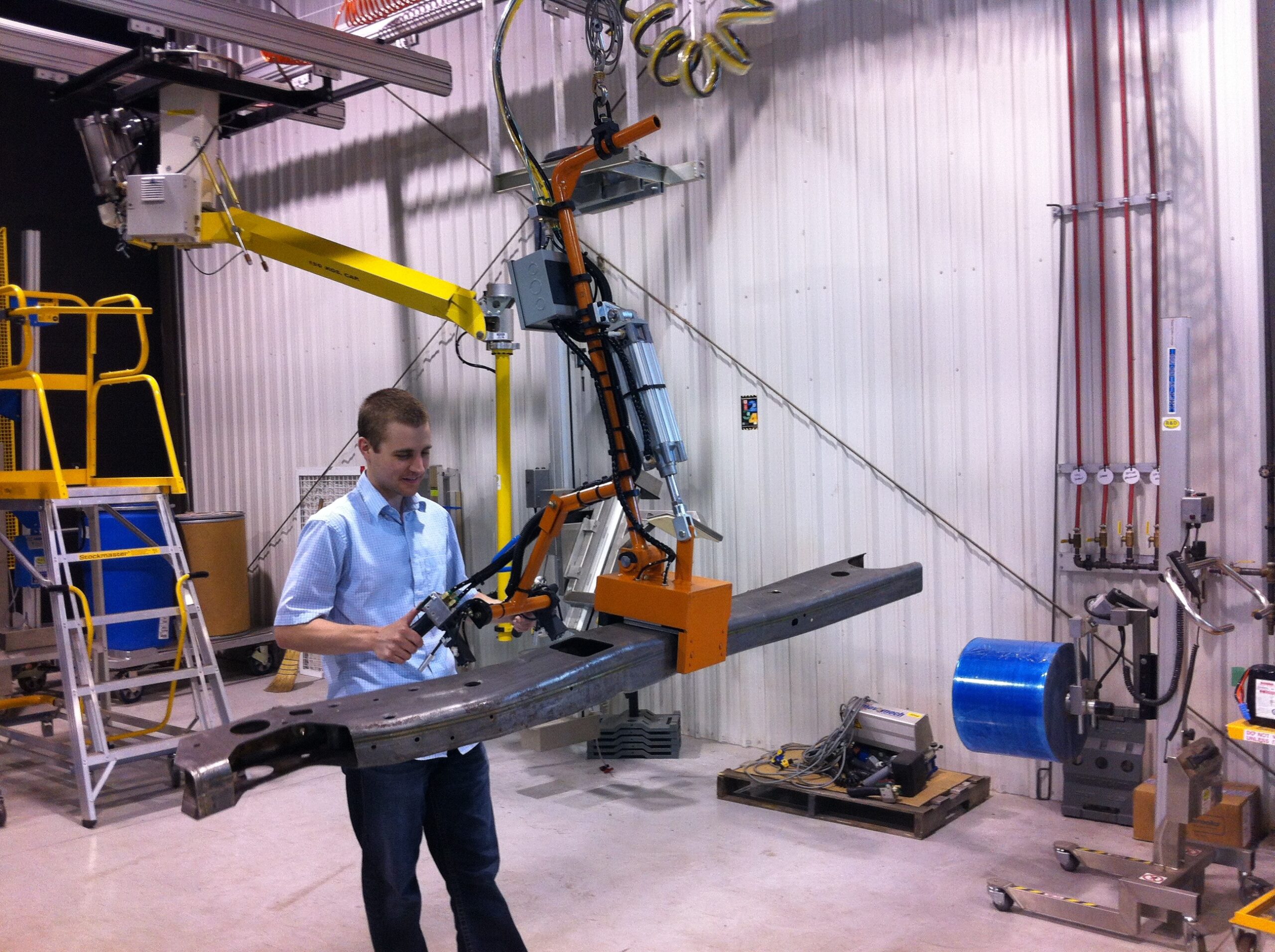Related: End Effectors, Pick and Place Systems & Vacuum Lifters
Anti-collision sensors, grippers, magnets, vacuum cups, force-torque sensors, collision sensors and so much more.
Why does this blog s start with a list of seemingly random items when you clicked on this link for information about End Effectors, also called End-of-Arm-Tooling? Well, that’s because that list is a small sample of what can be accomplished with an end effector.
But let’s back up a second. What are End effectors? The simple definition is as follows: “End effectors, also known as End-of-Arm Tooling (EOAT), are devices that are attached to the end of an overhead lifting system or robotic arm. They are designed and used to act as the structures wrists / hand that interact with the environment.”
So essentially End effectors are kind of like Swiss Army Knives, as they can do just about anything you may need it to do! End effectors also allow you to easily switch out certain parts to be able to complete other tasks. So with all of these different applications out there let’s focus on two: Lift assists and lifting devices as ergonomic solutions.
Now that we know what an End Effector is and what specialty of Robotic End Effectors we will be focusing on, let’s move on.
End Effectors come in several different models, some of which some include:
Each of the different robotic peripherals have been developed with specific tasks in mind. For example, a vacuum end effector comes with a suction cup on the end, which is used to move flat or fragile items such as glass panes.
You may now be wondering exactly how an end effector can be open-ended. It truly depends on what the end-user wants: they can be operated manually, mechanically or even powered to meet your current application needs.
What if you have a very specific need or are not sure about what you should buy for a particular application? If you are in this circumstance then it is best to contact a material handling specialist. A material handling specialist will create a detailed analysis of your needs taking into consideration every aspect of your application from the environment, desired operation, clearance levels, product materials, surfaces, clamp locations, movements the machine would need to complete and cycle times. That is a lot to consider, but if you want it done right you need to ensure all of these items are factored into the equation before you buy your end-of-arm tooling device.
In the end, an End Effector is built with three factors in mind:
Employee safety.
Speeding up production.
Reducing the amount of bending, twisting or lifting employees have to do.
End-of-arm tooling devices are the way to ensure a fast and effective production line. What are you doing to keep up with the competition?
Do you have an End Effector? Are you looking into an End Effector? Comment below and share your opinion or ask any questions you may have.


